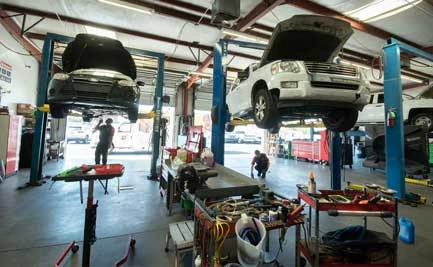All Categories
Featured
Your vehicle's battery is important for maintaining points running efficiently. It powers your engine's ignition system, lights, radio, and also your car's electronics. Nevertheless, like any kind of component of your auto, the battery doesn't last permanently. Frequently examining its health and wellness can aid you stay clear of abrupt malfunctions and ensure that your vehicle continues to be trustworthy. In this post, we'll assist you with the actions for inspecting your vehicle's battery health and wellness to see to it it's operating at its best.
Why Monitoring Battery Health And Wellness Is Essential. A healthy and balanced battery is crucial for a reliable driving experience. When a battery starts to fail, it can bring about slow down engine beginnings, flickering lights, and in many cases, total power failure, leaving you stranded. Battery issues are not always very easy to detect, and they can occur without warning. Frequently monitoring your battery's health and wellness enables you to attend to issues early and avoid inconvenient scenarios.

Indicators That Your Cars And Truck Battery Might Be Weak. Prior to you begin testing, it is necessary to identify the typical signs of a weak battery. Look out for the adhering to symptoms:
Problem Beginning the Car: If your engine cranks slowly when beginning, it could suggest that your battery is battling to offer the necessary power. Warning Light on the Dashboard: Many modern lorries will have a battery caution light that comes on if there's a concern with the battery or charging system. Lowering Lights: If your headlights or indoor lights dim when beginning your car, it could mean the battery is not holding a charge properly. Corrosion: Inspect the battery terminals for any noticeable rust. If you discover a white, powdery substance around the terminals, maybe an indicator of a falling short battery. Old Battery: Batteries normally last around 3-5 years. If your battery is older and showing any of these symptoms, it might be time to check its health. How to Check Your Automobile's Battery Wellness. Visually Inspect the Battery:. Beginning by aesthetically evaluating your battery. Look for any cracks, protruding, or leakages on the battery's surface.
Evaluate the Battery Voltage with a Multimeter:. Among one of the most exact methods to examine your battery is by gauging its voltage. This can be done utilizing a digital multimeter. Below's how:
Set the multimeter to DC voltage and choose the 20-volt array. Switch off the engine and attach the red (positive) probe to the positive incurable and the black (negative) probe to the adverse terminal of the battery. A fully charged, healthy battery ought to reveal around 12.6 volts or higher. If the analysis is between 12.4 and 12.6 volts, your battery remains in great problem. If the voltage is reduced than 12.4 volts, your battery might be weak and could need charging or substitute. Anything listed below 12 volts suggests the battery is nearing the end of its life. Do a Load Test:. A tons test assists identify how well the battery does when the auto is running. While this examination is usually done by a professional, you can execute a fundamental version at home utilizing a battery lots tester. Below's exactly how:
Shut off the automobile and examine the battery voltage with a multimeter as you did previously. Beginning the auto and activate the fronts lights and cooling to place a load on the battery. If the voltage goes down dramatically below 12 volts when the engine is running, it might imply the battery is stopping working to charge effectively. If you don't have a lots tester, you can also focus on exactly how the electrical systems of the car behave under load. If lights flicker or other systems act erratically, your battery could not be holding a charge. Examine the Charging System:. Your generator is accountable for charging the battery while the auto is running. A faulty alternator can affect the battery's performance, even if the battery itself remains in great shape. To examine the generator's result:
Start the auto and examine the battery voltage again. The voltage ought to be between 13.7 to 14.7 volts when the vehicle is running. If it's outside this range, the alternator might not be charging the battery correctly, which could lead to battery failure gradually. When to Replace Your Battery. If the outcomes of your examinations suggest that your battery is weak or unable to hold a charge, it might be time to replace it. Below are some reasons why you ought to take into consideration replacing your battery:
Battery Age: If your battery is older than 3-5 years and revealing signs of weak point, it's usually best to change it. Irregular Performance: If you require to jump-start your automobile on a regular basis or discover that the cars and truck has difficulty beginning, it's a clear sign that the battery is failing. Noticeable Damages: If the battery is broken, leaking, or bulging, it is risky to proceed using it, and it must be changed quickly. Final Thought: Routine Battery Upkeep for Smooth Driving. Your vehicle's battery is necessary for trusted performance, and routine checks are the key to ensuring it remains healthy and balanced. By complying with these simple steps to assess your battery's wellness, you can catch problems early and stay clear of being captured off guard by a dead battery.
Latest Posts
The Versatility of Chain-Link Secure Fencing
A Historic Coastline Destination with Modern Thrills
Speedy Fixes for Your Vehicle - Reserve Your Spot with Montclare Auto Repair Now
